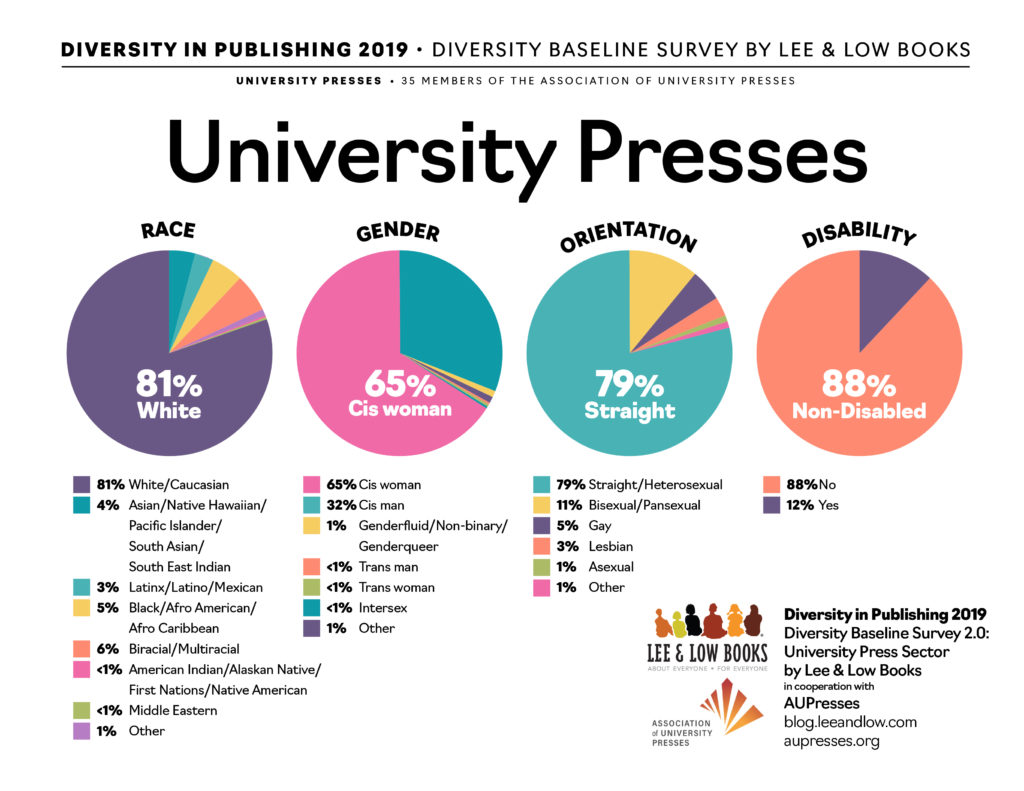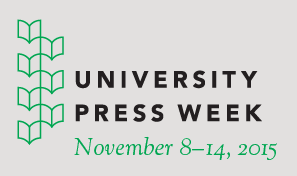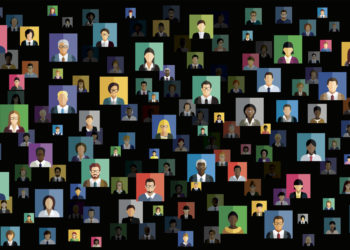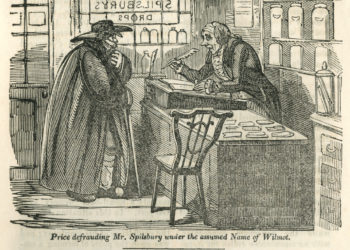Editor’s Note: This guest post is by Brenna McLaughlin. Brenna is the Research & Communications Director for the Association of University Presses.
Please see update at the end of the post.
“University presses function at the leading edge of knowledge production around the world. As such, we have a vital responsibility to implement anti-racist and anti-colonialist practices in our curatorial, marketing, and business activities, including the hiring, retention, and promotion of staff.”
These lines from the Statement on Equity and Anti-Racism, issued in 2020 by the Association of University Presses (AUPresses), contain a core commitment of the Association’s current work. In making explicit our community’s need to pursue specifically anti-racist practices in staff hiring, development, and reward, the Association seeks to propel university presses forward — and to generate change across publishing. However, the Association must acknowledge and address our own lack of progress, despite decades of diversity work, in building a publishing workforce that directly supports equitable knowledge production.
In 2019, Lee & Low Books reprised their groundbreaking Diversity Baseline Survey (DBS 2.0) of the US publishing sector (the report was published in January 2020). AUPresses had the opportunity to help recruit university presses to a wider industry survey pool than the original 2015 survey. Through direct appeals to our US-based community, more than thirty member presses signed on to participate in the DBS 2.0. This past summer, Lee & Low Books and DBS 2.0 co-authors Laura M. Jiménez (PhD, Boston University Wheelock College of Education & Human Development) and Betsy Beckert (graduate student in the Language and Literacy Department of Wheelock College of Education & Human Development) broke out data from the university press segment (representing 926 individual responses, out of just over 1500 staff contacted) at the Association’s request.

What these data show is an extremely white industry segment — at 81%, the university press (UP) workforce is even whiter than the full Lee & Low DBS 2.0-surveyed landscape (76%). The UP segment shows less gender imbalance than the full survey; cis women (whose current gender identity matches the sex they were assigned at birth) make up 64% of the UP workforce, whereas the full US publishing field stands at 74%. On two other aspects of identity that the Lee & Low study could extract without exposing personally identifiable information, both the UP segment and full publishing industry demonstrate a similar make-up: the US UP workforce is 79% straight-identifying (full industry stands at 81%) and 88% non-disabled (full industry representation is 89%). Those last two data points may seem superficially reassuring to the publishing industry, being more representative of the US population. (Gallup estimated that in 2020 5.6% of US adults identify as LGBT. The 2019 American Community Survey 1-Year Estimates from the US Census indicate that 12.7% of the US lives with disabilities.) When we recognize both the significant power imbalances LGBTQIA+ and disabled communities experience and that intersecting non-majority identities can compound the biases an individual may encounter, these numbers simply add to the troubling picture of homogenous UP workplaces. As Jiménez and Beckert commented in sharing the sector breakdown:
In fact, the [UP] data is so incredibly skewed it is unlikely that the few non- white, cis, straight, able people have any kind of demonstrative power or agency to push against the normative status quo standards.
These numbers cannot come as a surprise to anyone in our field. While this particular research looked only at a small number of presses in the US, the data are very much in line with numerous recent demographic studies of publishing and scholarly communications. The AUPresses Gender Equity & Cultures of Respect (GECOR) Task Force surveyed our global membership in 2018 and showed a workforce that is 79% white and 71% women; the 2018 Workplace Equity Project found a global scholarly publishing field that is 83% white and 76% women; the most recent Publishers Weekly Salary Survey found the 2018 US publishing sector was 84% white and 80% women; and respondents to a 2014-15 survey of international scholarly publishing employees undertaken by Albert Greco, Robert Wharton, and Amy Brand were 91% white and 64% women. (Please note, gender categories were asked and labeled differently in each of these studies, ranging from conflation of binary sex and gender categories to offering a range of gender identities. The category “women” in each thus may be defined somewhat differently.) In the mid-1990s, the Association (then known as AAUP) discovered that among 100 presses, there were only 35 minority staff holding editorial positions.
To take up the foundational metaphor of the Racial Equity Institute’s (REI) Groundwater Approach: these statistics constitute multiple observations over a long period of a lake filled with dead fish. The question that we need to face right now is not “how many dead fish?”, but rather “why is the water we swim in so toxic to so many of us, and how do we fix it?” Attempts to address the numeric disparities have been underway in scholarly publishing and related fields for decades. Examples from just our Association’s history include grant-funded minority internships and fellowships to publishing institutes in the 1980s, a minorities in publishing recruiting poster in the late 1990s, and a dedicated Diversity Committee through the early 2000s.
These historical efforts to increase diverse representation in our university press workplace numbers have not, as the evidence of DBS 2.0 shows, changed the toxicity of the water. To begin to understand why, it may be helpful to turn to the critical literature that examines a closely related and demographically similar field, that of library and information studies (LIS). (See the Ithaka and ARL report, “Inclusion, diversity, and equity,” and the 2017 ALA Demographics Study for information on the field’s demographics.) With greater formalized credentialization and often faculty-status positions, the field of LIS is a source of more in-depth scholarship related to workforce diversity failures than publishing — work from which university presses can learn.
April Hathcock argues persuasively that the problem isn’t diversity, but whiteness. Whiteness, as usefully defined by Angela Galvan, means “white, heterosexual, capitalist, and middle class” and, elaborated by Hathcock, “also stands as a marker for the privilege and power that acts to reinforce itself through hegemonic cultural practice that excludes all who are different.” Hathcock employs this view of whiteness to interrogate the failure of long-standing and indeed model diversity programs — the type of effort that Todd Honma argued a decade before “appeals to a limited form of identity politics.” A key example Hathcock dissects is the ARL Career Enhancement Program and its then-current application process: “Each of [the program] requirements assumes that applicants are situated in positions of white, middle-class, cisgender normativity that allow for the temporal, financial, and educational privilege that fulfilling these criteria would require.” David James Hudson called this “[d]iversity’s preoccupation with demographic inclusion and individual behavioral competence” which can preclude an effective examination of the groundwater of race, racism, and power.
Look again at the excerpt from the AUPresses Antiracism Statement above. Another potential source of groundwater contaminant may be the “vocational awe”, a concept first developed in the LIS field by Fobazi Ettarh, that is reflected even there. The quality of scholarship that university presses produce, the rigorous standards that our community upholds, and the earned reputation for publishing “leading edge” scholarship and newly emerging fields are all awesome, in both laudatory and significantly less positive senses. Upholding the value of the work university presses do may in effect paper over criticism of any hostile realities of the conditions in which that work is done. The “normative status quo” of whiteness and the silencing effect of vocational awe may be understood as some of the toxins that have kept our demographic observations essentially unchanged.
The actions our community takes now must be with the understanding of past failure and the intention to effect long-term change in our environment. The university press and publishing sectors have in recent years developed and supported new initiatives that hold the promise of more effective results. Examples include: the Mellon University Press Diversity Fellowship program — paid positions in acquisitions editorial departments — which emphasizes mentoring and professional-network building; the newly announced Princeton University Press fellowship program, which explicitly disavows the normatively white requirements of a college degree or relevant work experience before considering candidates; increased entry level salaries at a number of well-known publishers such as AUPresses member Beacon Press; and more widespread moves to at least do away with the kinds of unpaid internships that privilege those who can afford to gain essentially volunteer experience in publishing.
These efforts are still singular enough to make news, though, and to meet their promise we must ensure that they are a spur to thoughtful and foundational community-wide action. Coordinated efforts and new resources for action towards equity are emerging. The Association recently provided an opportunity for its 154 member press directors, volunteer board and committees, and staff to participate in virtual REI Groundwater training sessions. A growing library of resources for presses pursuing equity work are now available to members via the AUPresses collaboration space UP Commons, including an Equitable Workplaces group explicitly dedicated to addressing questions, sharing tools, and providing opportunities for improving equity in our workplaces. Some UPs are examining compensation, promotion, and their own pay scales and employee classifications for systemic inequities. The new AUPresses Equity, Justice, and Inclusion Committee has started ongoing conversations through a Community Reads program, established a regular newsletter to members, and, when early community discussions uncovered the sense held by many junior staff that press leadership may not prioritize justice and equity work, launched a year-long initiative intended to activate the press director community in this work.
Hathcock’s 2015 article, and later work by LIS scholars Isabel Espinal, Tonia Sutherland, and Charlotte Roh (2018), include adaptable recommendations for organizations to pursue — as do our own recent GECOR and Diversity & Inclusion task forces’ reports. The Toolkits for Equity project, spearheaded by Niccole Leilanionapae‘aina Coggins, Gisela Fosado, Jocelyn Dawson, and Melanie Dolechek and now under the aegis of the Coalition for Diversity and Inclusion in Scholarly Communications, is also working to create effectively anti-racist workplaces. The Association recommends the first of the three planned toolkits, “Antiracism Toolkit for Allies,” to all of our white colleagues as an essential tool for understanding the scope and the process of dismantling institutionalized racism. Toolkits both for Black, Indigenous, and People of Color (BIPOC) in scholarly communications, and for Organizations, are now in development. All of this work has the aim of embedding a dedication to equity and justice into everything that a publisher does. Equity work cannot be the exhausting responsibility of our BIPOC and other historically excluded colleagues, dependent on the anti-racist commitments of a few active individuals, nor solely reactive to news cycles — anti-racism must become a part of the groundwater.
The university press community’s deep commitment to scholarship that shines a critical light on racist systems and histories, and to scholarly projects that seek to decolonize and make more equitable our human stores of knowledge, is one of our most significant contributions to the world. Temple University Press Director Mary Rose Muccie asked during a December 2020 press directors’ session on brainstorming equity actions — unconsciously echoing a similar question Biodun Iginla, then an editor at Minnesota, posed to the community in 1996: “Do we practice what we publish?” Getting, at long last, to the point where we can honestly answer “yes” may be what makes the next benchmark survey an observation of healthier water.
Sources
The Diversity Baseline Survey (DBS 2.0) was created by Lee & Low Books with co-authors Laura M. Jiménez, PhD, Boston University Wheelock College of Education & Human Development and Betsy Beckert, graduate student in the Language and Literacy Department of Wheelock College of Education & Human Development.
Update: After publication, Charlotte Roh contacted me to point out that her work on diversity in scholarly communications encompasses far more than the library-centered piece that is cited here. Roh has published and presented significant work on scholarly communications and social justice, particularly in terms of how new modes, platforms, and access models for scholarly publication might consciously and radically address both demographic disparities and systemic inequities in the scholarly ecosystem. I would like to particularly point readers to Roh’s 2016 editorial in College & Research Library News, “Library Publishing and Diversity Values.” Roh observes the similar lack of diversity across faculty, libraries, and the publishing workforce and goes on to outline specific ways new library publishing and open access movements provide opportunities to address these inequities. Even from within established institutional structures and professional practices, university presses seeking greater equity and justice will find these examples and ideas enlightening. In a recent essay co-authored with Harrison W. Inefuku and Emily Drabinski, Roh expands these observations to the inequities of global systems and colonialist hierarchies of scholarly publishing and scholarly prestige, and explores how colleagues across our dependent fields can seek “an ethical scholarly communications practice.” A more comprehensive reference to Roh’s body of work would have enhanced the piece, and I sincerely regret the oversight. Again, I encourage readers, especially members of the university press community, to look to LIS scholars, including Roh, her co-authors, and the other scholars cited above, for a deeper understanding of how university press and Association equity efforts fit into a larger history and ecosystem of scholarly communications and academic institutional structures.
Discussion
19 Thoughts on "Guest Post — Reckoning with Whiteness in Scholarly Publishing — UPDATED"
I love how Asians get lumped together. Someone who is, say, Chinese is basically the same as someone who is Native Hawaiian, Pacific Islander, South Asian, South East Indian right?
The majority of the world population is Asian. This infographic can afford to show multiple 1% and <1% categories, but doesn't have space for some of the nuance in Asian identity?
I could not agree more. But why stop there? Are all “White” people the same? Are all “Black” people the same? How much do I, a native of the eastern United States, really have in common with another “White” person born and raised in Siberia, or even in Canada? Why do we only talk about the gender and orientation variables within those groups, and not social and geographical backgrounds? Is it because that would undercut the argument that “White people” control everything? Does the color of my skin alone tell these researchers everything they need to know about me?
I think this argument has reached a point of reductio ad absurdum. It is impossible to do demographic research without using demographics. Yes, each individual within a demographic is unique, and the broader the demographic used, the less applicable the conclusions are to any one individual, but those conclusions are not without value.
I love how Latinos get lumped together. Someone who is, say, Mexican is basically the same as someone who is Native South American, Caribbean, Mestizo, Mulato right?
A significant part of the world population is Latino. This infographic can afford to show multiple 1% and <1% categories, but doesn't have space for some of the nuance in Latino identity?
I fully support every effort to ensure that people are not excluded, from anything, based on race, gender, orientation, or view point. I equally support efforts to reach out to everyone, everywhere, to make them aware of the opportunities available and to help them take advantage of them.
But I do object to the idea that some social science researchers can determine what percentage of each of their currently favored groups should be working or taking part in research in any given industry or area of study and then label any instance of those percentages not being met as abhorrent. People make choices in their lives to pursue certain interests and certain professions. We should work to ensure that everyone has that freedom, not that everyone takes advantage of it in just the right percentages to create the color graph the social scientists would like to see.
How do those figures compare to the population at large? Or, as Tom Chivers asks, “what’s the denominator?” See his statistical style guide, about halfway down this article: https://unherd.com/2021/03/how-dangerous-is-the-astrazeneca-jab/
According to the US Census Bureau (https://www.census.gov/quickfacts/fact/table/US/PST045219) 76.3% of the U.S. population is “White alone” but that number goes down to 60.1% when it is “White alone, not Hispanic or Latino,” compared to our 81% white. People who are “Black or African American alone” compose 13.4% of the population, but we only have5% Black/Afro American/Afro Caribbean employees. Those are only a couple of examples, but our demographics do not align with national averages.
I think a more relevant question is how many (for one instance) African Americans applied for open editorial jobs and how many were hired. We may find that 100% were hired or somewhere in between and that would be a better reflection of the situation.
I disagree because hiring statistics of Black applicants ignore the fact that publishing is what some have called a “vanity” industry, historically full of unpaid internships and low starting wages. One point this piece touches on is that some demographics are effectively priced out of the industry due to lack of privilege. Also, one can argue that no Black people are hired because no Black people are applying, but where and to whom are we catering our job postings? You don’t hire the people you’re not looking for.
Reasonable, fair minded people support equal opportunity and workplaces that assess individuals on the basis of their skills, qualifications, and performance regardless of race or any other personal identifier. Reasonable, fair minded people reject characterizations of an entire race and a priori assertions regarding race that can ascribed to individuals. Does this post reflect how a reasonable, fair minded person would examine the distribution employees into the categories identified? If you have read the post above and confidently concluded that “whiteness” has now been “usefully defined,” and the diversity in publishing data above constitutes a confirmation that the waters are toxic in the university press workplace, then you have chosen to abandon the posture of skepticism that should still matter to people working in the field of scholarly publishing. I understand the breakdown of individuals working in university presses in 2019, as defined by the categories in the graphic above. I do not understand how anyone can draw useful conclusions from this data as it relates illegal discrimination, prejudice, capitalism, privilege, power, “whiteness,” or any other linked causation. If there is imbalance, what is the right balance for the graphic above? Should university presses target to proportional representation to the US population, local population, etc.? What does “equity” actually mean, and how is it different than equality? If imbalance is concerning in itself, should we be concerned that men are underrepresented? How can we interpret the data of employees with no information regarding the applicants? With respect to race, how is each race defined, (another problem with this malleable concept, as reflected in prior comments.) What exactly can we know about someone based on their race that provides an assurance that that person will add to the diversity of an organization?….and how is that compatible with defining a person by who they are? Does the “privilege and power” associated with “whiteness” apply to all whites? If so, how are we promoting an “inclusive” environment by reminding the first generation eastern European immigrant that he or she is collectively complicit in the historical injustices that led to insufficient diversity among university presses. Reasonable people want to know they work for an organization that does not discriminate illegally and maintains a welcome environment. The reports on advocacy research inspired by woke, progressive orthodoxy with no counterarguments from conservative scholars is growing tiresome. The relatively low incidence of pushback in this forum shouldn’t be misinterpreted as acceptance by a broad cross section of SSP members.
Of course, it’s not a problem that men are underrepresented.
And yet, in our industry, men are over-represented in high level positions, and earn significantly more than women:
https://scholarlykitchen.sspnet.org/2016/10/25/mind-the-pay-gap/
So clearly, we continue to suffer from the same biases and inequity that many other industries face. I’m kind of appalled at how many of our commenters feel so aggrieved at the idea of fairness or attempts to lift others up to the same level of privilege that they already enjoy.
Lots more work to do.
You’re drawing an awful lot of conclusions about, “the level of privilege” that “they” enjoy, when I’m not sure you know anything about the commenters you’re referring to, or their level of “privilege”.
It’s also odd that you frame them as aggrieved at the very “idea of fairness” when they only seem to be questioning what constitutes “fair” and by what methods we should go about pursuing “fairness”. That seems like a remarkably uncharitable characterization on your part.
Finally, you appear inclined to interpret disparity as prima facie evidence of unfair discrimination. More men, ergo sexism? More whites, ergo racism? That doesn’t seem very scholarly to me. Does it work the other way around? Does more men or whites in undesirable jobs equal unfair discrimination? Would women being overrepresented in a favorable metric also represent sexism et cetera?
Lots more work to do, indeed; just not the kind you’re thinking about.
Let’s be clear — what you’re seeing here are only the comments that get through our moderation process. As the moderator, I’m seeing everything that comes in, both here and through various social media channels. And any time we do a post on DEI, what I have to wade through isn’t particularly pleasant.
And yes, I do think the word “aggrieved” is the right word, as (aside from the angry comments you aren’t seeing), here we have people railing against non-existent quota systems that no one is proposing, or looking in fear at the actual actions that are being taken as described in this post, namely creating fellowship opportunities and better training to help create a more welcoming and supportive workplace. Why these sorts of actions consistently result in such a defensive reaction is instructive, and yes, perhaps I do assume that those reactions are coming from people in a position of privilege because it would make little sense for those whom they benefit to be fighting against them.
I applaud this article and the many community and individual efforts now ongoing to diversify and democratize scholarly publishing: who we are, how we hire and run our organizations, what and who we publish. At the MIT Press, and many peer university presses today, these are top priorities. I think of this important and challenging work in terms of multiple levers of change. I also perceive deep connections between our DEI growth initiatives and our open knowledge initiatives that I haven’t seen discussed much — not just open access but publishing practices and infrastructure. This connection is explicit in this article’s opening quote, and implicit in the reference above to making “more equitable our human stores of knowledge”.
Who has access to the books and journals that university presses publish? Looking beyond the content itself, what core values do our business models, editing practices, and design and marketing decisions reflect? Who participates in the research and knowledge production enterprise at the outset? How can we make our practices for assessing quality, contribution, and impact more transparent and equitable? How do we build a publishing eco-system that doesn’t perpetuate or amplify entrenched bias? To Mary Rose Muccie’s excellent question “Do we practice what we publish?”, I would add as a corollary “Do the more diverse professionals we wish to attract to, and fully include in, university press publishing see themselves reflected in how we publish?”
I really appreciate The Scholarly Kitchen publishing this guest post. And I appreciate being cited in it. But I’m surprised and disappointed not to find my colleague Charlotte Roh’s work in this exact area not cited more (just one citation to a jointly authored piece). Charlotte has been working at the forefront of exposing and challenging the whiteness in publishing from both the LIS and publishing fields for years. An article like this can’t possibly deal with this topic without putting her work front and center. You almost have to try not to:
https://crln.acrl.org/index.php/crlnews/article/view/9446/10680
https://crln.acrl.org/index.php/crlnews/article/view/24321/32136
https://repository.usfca.edu/librarian/8/
https://academicworks.cuny.edu/ulj/vol22/iss2/2/
Not sure what happened in the editorial process for this piece (or the writing), but this is a huge oversight.
Sincerely,
April Hathcock
Director of Scholarly Communications & Information Policy
NYU Libraries
I applaud the sentiment in the above post, but I’m not sure ‘whiteness’ is the most appropraite word to use here. This fails to take into account biases relating to class, disability, sexual orientation as well as gender that are currently barieers to entry and success within our industry. Minorities of all kinds struggle to assemble the portfolio (degree, work experience etc) that tend to be the threshold for entry into our industry. Rather, I would prefer that this article had been titled ‘Reckoning with Homogeneity in Scholarly Publishing. I have seen a depressing trend in recent years where different equality causes seem to end up ‘lobbying’ against one another for airtime, whereas what we really should be talking about is common cause equity. This is nothing more than classic ‘divide and conquer’ techniques by those who want to protect their own privilege that ultimately prevents progress being made. We aren’t going to create a more diverse industry by labelling the problem as ‘whiteness’ (or ‘ableism’, or anything else) – rather, we need to get back to remembering why diversity is good for business (because it leads to diverse perspectives, which in turn lead to better deciiosns) and act accordingly. Focusing on one aera of inequality – as the latter part of this post does – doesn’t move teh argument forward, in my view. Instead, we need to focus on policies that make our industry more inclusive for everybody – ending unapdi internships, not making a degree mandatory for every position, and flexible working for all would be three examples of how this could be done.



